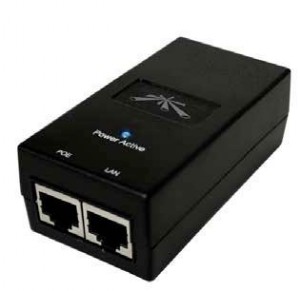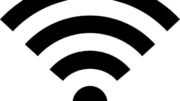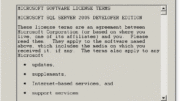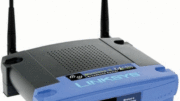My router is in my home office, surrounded by a mountain of cables. I’d love to put it in the attic more centrally located. I could run an ethernet cable up there, but I’m more worried about power. It’s one thing to run a single, slim cable, but pulling power from the conduits, adding a separate junction box up there… that’s real work.

That’s real work. I want to avoid that.
The solution? Power Over Ethernet. One cable to rule them all. Power and networking in one cable. Not only that, but safe, easy power. Just enough power for the device I need. It’s real, and it works.

An ethernet cable has 8 wires in it. Only four of them are used for Ethernet. The connector was designed to have extra capability. Not only that, the RJ45 standard was designed based on old phone wiring. Telephones are self powered. Bottom line: These connectors were always designed to carry power.
Power over Ethernet, or PoE, takes advantage of these extra wires to safely send enough power to run a 45 watt light bulb. This also happens to be plenty of power for most network devices. Look at the power brick or the back of any device, and you’ll see a rating.
Some power adapters don’t list watts but they list volts and amps. Luckily there’s an easy translation between volts, amps, and watts.
Watts = Amps x Volts
If a power adapter lists volts and amps but not watts, you’ll have to do a little bit of math. Here’s an example.
5V, that means 5 volts. 500mA, that means 500 milliamps, or half and an amp. (1000 milliamps = 1 amp.) So with a little math we see that this power adapter uses 2.5 watts. Not a lot. Power over Ethernet systems are rated by how many watts they provide. 15, 30, and 45 watt systems are pretty common.
I know what you’re thinking… how could that possibly be safe?
Most power cable is really thick and heavily insulated. It’s designed to carry 110 volts at 20 amps with complete safety. That’s 2,200 watts. Power over Ethernet is 45 volts. That’s how it can be safely carried over two skinny wires with very little insulation.
Not every device is designed to work with Power over Ethernet. However, most devices that use a wall wart can work with PoE instead, through the use of external adapters. There are two parts to a PoE system. A power injector is used to put power on the line and an adapter is used to split it out. This adapter generally can be set to many different voltages and amperages so that it can work with many different devices.
Is this like HomePlug?
HomePlug is a term for connecting ethernet using existing power lines. It’s sort of the opposite of PoE. HomePlug uses your existing electrical wiring to carry network information. It’s a good system for the home, but it’s not reliable enough for businesses.
Implementing Power over Ethernet
The best time to start using PoE is when doing a fresh install. Choose equipment that already supports PoE. This is very common in business installs since phone systems rely on the same cabling as computer networks. Many phones are designed to use PoE because most people don’t expect to plug their phones into a power outlet. If the network hardware is set to use PoE from the start, there will be no need for adapters and the hardware will be more reliable over the long term.
PoE is better than HomePlug in a business environment because the network speeds are at least four times faster and HomePlug is potentially affected by the fluorescent light fixtures commonly used in business.
Another advantage of PoE is that a UPS can be used as part of the power feed and that UPS can power every PoE device on the network in the event of a loss of power. Of course you would need a fairly decent UPS to power everything.
PoE can be used for wireless access points, networked cameras, IP phones… pretty much any device with a low power draw and a network attachment. So, when setting up your network think of Power over Ethernet. Even if you don’t use it right away, it is sure to become important in the future.





